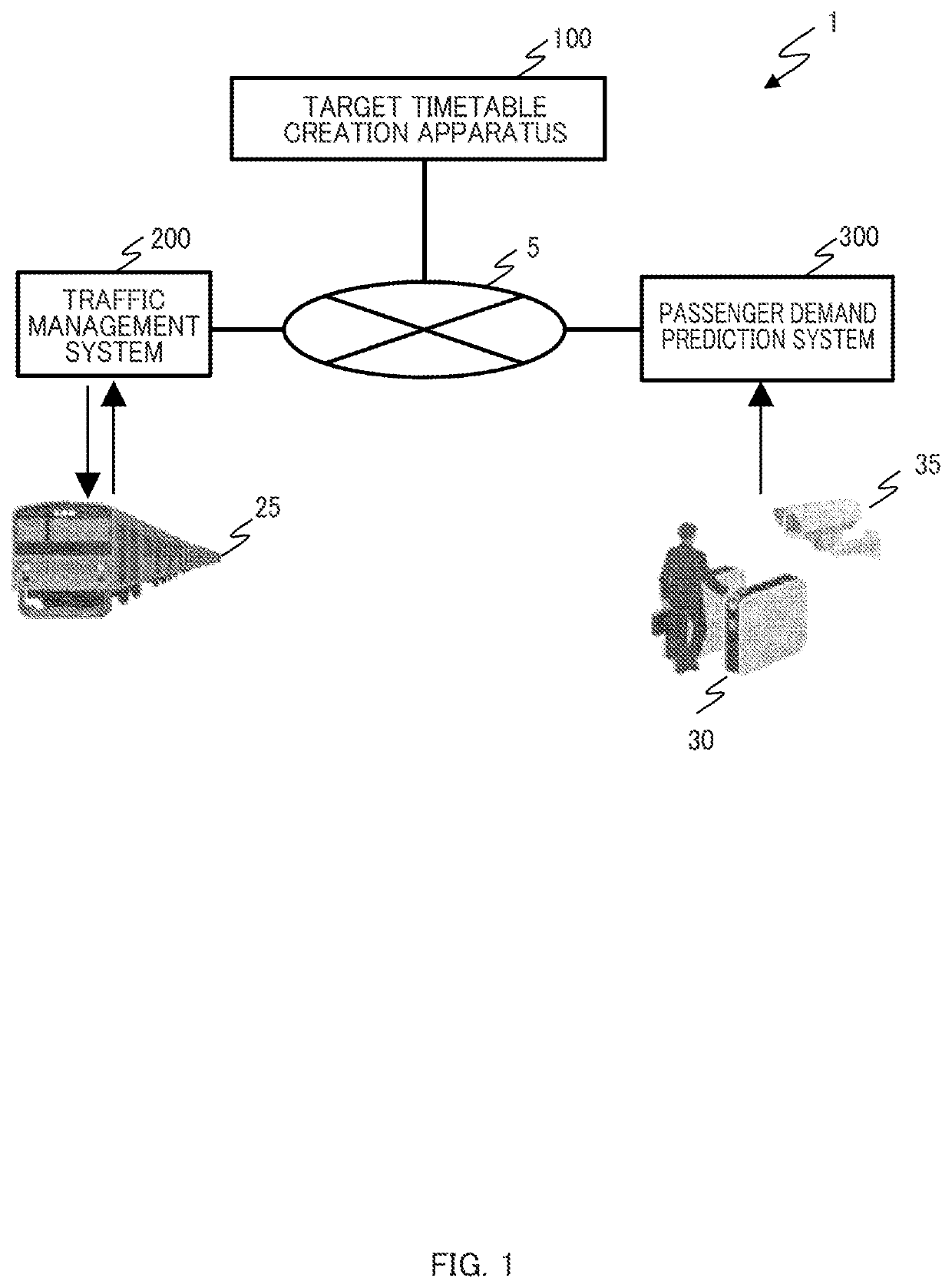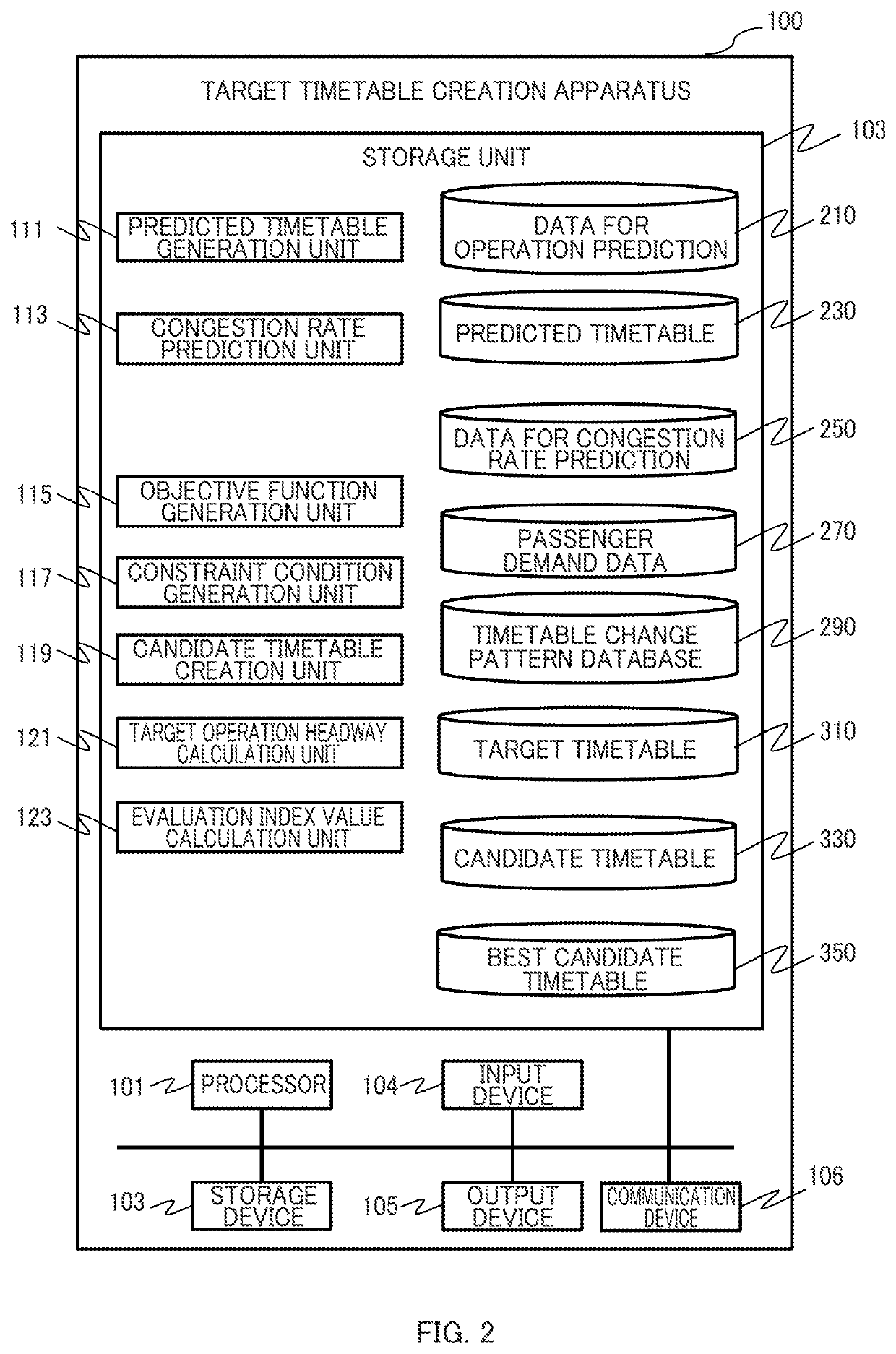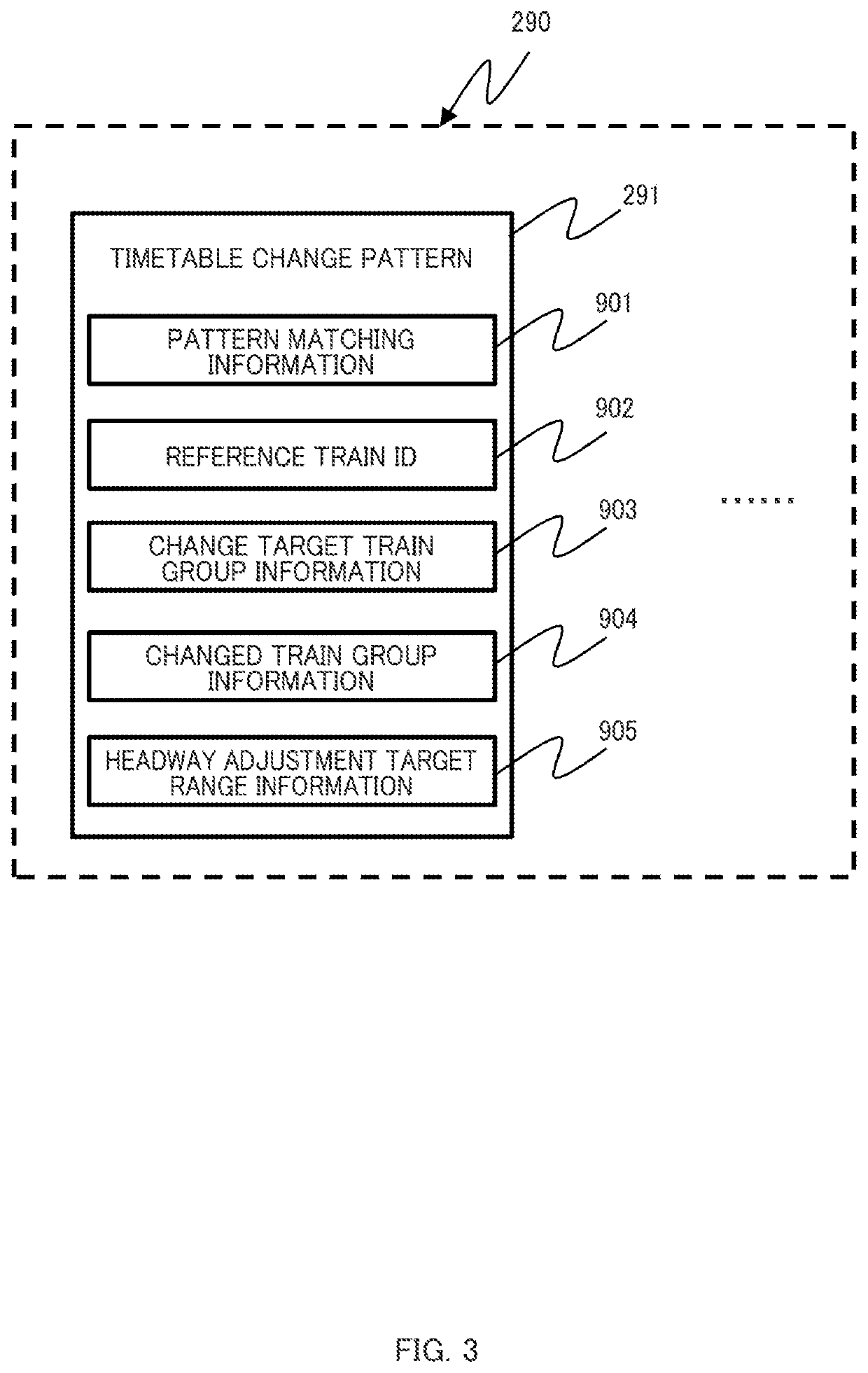Timetable Creation Apparatus, Timetable Creation Method, and Automatic Train Control System
a creation method and timetable technology, applied in the field of timetable creation apparatus, timetable creation method, automatic train control system, can solve the problems of long time, increased personal space, and increased difficulty in achieving uniform quality
- Summary
- Abstract
- Description
- Claims
- Application Information
AI Technical Summary
Benefits of technology
Problems solved by technology
Method used
Image
Examples
first embodiment
[0040]Hereinbelow, a first embodiment of the present invention will be described by using FIGS. 1 to 22. This embodiment is an example preferably applicable to a simple linear railroad line as illustrated in FIG. 11 to be mentioned later, for example. In the following, for a simple description, the description will be given by taking, as an example, a case where trains are not distinguished between a local and an express train, the transport capacity (such as the passenger capacity per car and the number of cars per train set) is the same for all trains, and all trains stop at every station. However, embodiments of the present invention are not limited to this.
[0041]An automatic train control system in this embodiment holds a train timetable serving as a target in train control (target timetable) and updates this target timetable based on information obtained from various sensors, such as running histories, so that a train operation service can be provided to passengers with a quali...
second embodiment
[0195]A second embodiment of the present invention will be described below by using FIGS. 23 and 24. This embodiment is an example preferably applicable to a loop line. A target timetable creation apparatus 100a (not illustrated) in this embodiment differs from the target timetable creation apparatus 100 in the above-described first embodiment in the contents of the headway adjustment process s93. Thus, the contents of the headway adjustment process in this embodiment will be described in detail below.
[0196]FIG. 23 is a diagram illustrating an example of a loop line according to this embodiment. As illustrated in FIG. 23, in this loop line, trains 953 running along an outer track LN21 circulate clockwise to each of stations ST21, ST22, . . . , and ST26 in this order while trains running along an inner track LN22 circulate counterclockwise to each of the stations (illustration of the trains running counterclockwise is omitted). FIG. 24 is a timetable diagram illustrating the operatio...
third embodiment
[0205]A third embodiment of the present invention will be described below by using FIGS. 25 to 28. This embodiment is an example preferably applicable to a case where, as illustrated in FIG. 25, a railroad line in charge of one course and a railroad line in charge of another course share the same track and platforms in some section. This embodiment is also an example of a process of equalizing the congestion rate by means of a simple headway adjustment in order to prioritize the responsiveness of the timetable creation, when the operation density is high and the passenger demand in each course can be considered substantially uniform in the headway adjustment range. A target timetable creation apparatus 100c (not illustrated) in this embodiment differs from the target timetable creation apparatus 100 in the above-described first embodiment in the contents of the headway adjustment process s93. Thus, the contents of the headway adjustment process in this embodiment will be described i...
PUM
 Login to View More
Login to View More Abstract
Description
Claims
Application Information
 Login to View More
Login to View More - R&D
- Intellectual Property
- Life Sciences
- Materials
- Tech Scout
- Unparalleled Data Quality
- Higher Quality Content
- 60% Fewer Hallucinations
Browse by: Latest US Patents, China's latest patents, Technical Efficacy Thesaurus, Application Domain, Technology Topic, Popular Technical Reports.
© 2025 PatSnap. All rights reserved.Legal|Privacy policy|Modern Slavery Act Transparency Statement|Sitemap|About US| Contact US: help@patsnap.com



